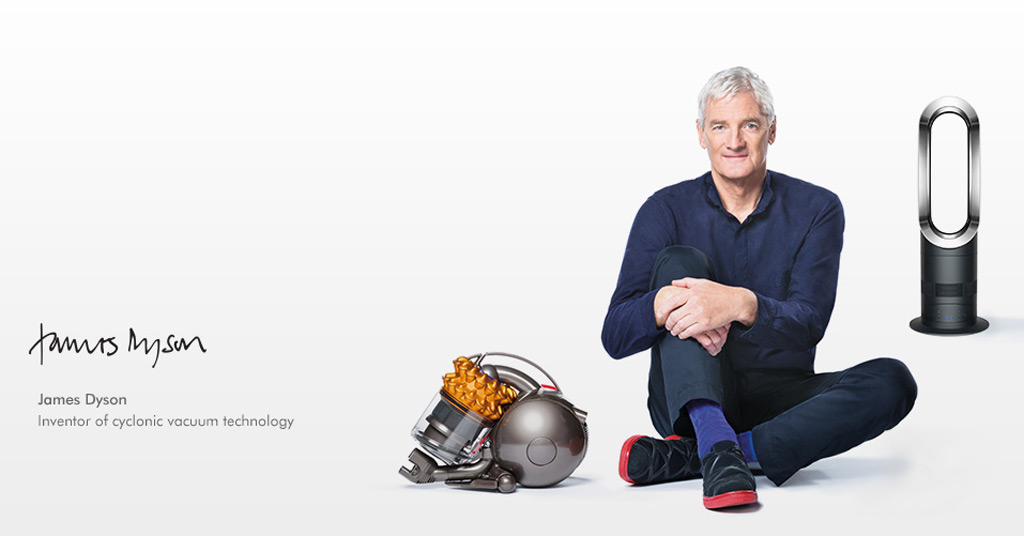While Dyson may be best known worldwide for high-tech vacuum cleaners, the company has a strong affinity for what the British call "boffins," which roughly translates to "eccentric genius inventors."
With a slight resemblance to Doc Brown of "Back to the Future" (as played by Christopher Lloyd), company founder James Dyson epitomizes the type.
Now Dyson has embarked on a daring new gamble in consumer appliances powered by electricity: automobiles.
DON'T MISS: Dyson electric car for 2020 draws executives from Aston Martin, Tesla
A lengthy article in the British Financial Times two weeks ago profiled the company and its efforts to develop no fewer than three electric-car models, with the first expected to launch by 2020.
It's worth reading the entire piece (subscription required), titled, "Dyson bets on electric cars to shake up industry."
The company's rollout plan may sound like an echo, 12 years later, of another electric-car startup's launch and product evolution: that of Tesla Motors.

2011 Tesla Roadster Sport. Photo by Joe Nuxoll.
The first Dyson vehicle, intended to serve as a proof of concept, will only be built in low volumes: in the "single-digit thousands," the article suggests. It will establish, says the FT, a "route to market, a supply chain, and a potential customer base."
Recall that the original Tesla Roadster, sold from 2008 through 2012, was capped at a final production of 2,500 units.
Pricing isn't mentioned, although previous coverage has suggested the electric Dyson cars will compete at least in the premium sector—as do its vacuum cleaners—rather than purely on cost.
READ THIS: Dyson walks away from (three) Sakti3 solid-state battery patents: updated (Apr 2017)
That first vehicle may also use conventional lithium-ion cells with liquid electrolyte, rather than the solid-state cells Dyson has hoped for several years to launch in its electric vehicles.
Dyson purchased solid-state cell startup Sakti3 in October 2015; that company's founder, Ann-Marie Sastry, has since left Dyson.
The company retains Sakti3's intellectual property and 94 of its patents, however.

Dyson’s concept drawing for a cyclonic filter system for exhaust emissions
Following the proof-of-concept vehicle, which is targeted for 2020, Dyson expects to launch two additional models to be built at higher volumes.
Little is known about those vehicles, though they are expected to be powered by solid-state cells.
If they are, that means Dyson will essentially be pacing Toyota, which has said solid-state batteries are required to make all-electric cars safe, practical, and affordable—a technology it expects to launch in 2022.
CHECK OUT: Dyson electric car plans revealed by U.K. government filings (Mar 2016)
The company's electric cars are expected to use lightweight materials, an area of core research at Dyson, suggesting that substantial portions of their structures may be comprised of plastics. Think BMW i3 and its carbon-fiber-reinforced plastic body shell as a precursor, perhaps?
Lighter cars, of course, can make more efficient use of the energy in their batteries, but the FT suggests they may also allow more flexibility with the form, shape, and design of the vehicles.
Last September, Sir James Dyson suggested that even that first Dyson electric car would be "quite different" in looks to any other vehicle.

James Dyson
With China now firmly established as the world's largest and most aggressive market for plug-in electric vehicles, that is a logical market for Dyson to target.
Where its electric cars may be manufactured remains in doubt, though to be truly affordable, the company will have to establish a 50-50 joint venture with a Chinese company and manufacture inside the country.
Current bets seem to favor Singapore or Malaysia, where the company already builds various electric consumer appliances, rather than its U.K. home base.













